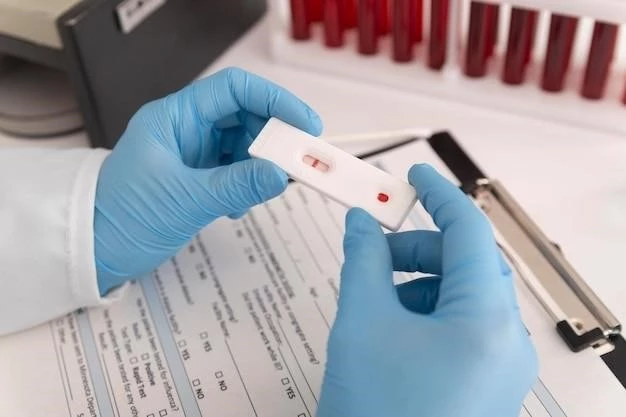Causes of Bruton Type Agammaglobulinemia
Bruton Type Agammaglobulinemia is primarily caused by genetic mutations affecting the BTK gene. These mutations disrupt the production of B cells‚ leading to a deficiency in antibody production. The condition is inherited in an X-linked recessive pattern‚ affecting males more than females. In some cases‚ the condition can also occur sporadically due to new mutations in the gene.
Understanding the genetic basis of Bruton Type Agammaglobulinemia is crucial for accurate diagnosis and management of the condition. Genetic counseling is recommended for affected individuals and their families to understand the inheritance pattern and potential risks of passing the condition to future generations. Research into genetic factors associated with this condition is ongoing to develop better treatment options and potential gene therapies.
While the precise triggers for the genetic mutations causing Bruton Type Agammaglobulinemia are not fully understood‚ early detection through genetic testing can help in implementing appropriate interventions and support. It is important for individuals with a family history of the condition to undergo genetic screening to assess their risk and take necessary precautions.
Symptoms and Diagnosis of Bruton Type Agammaglobulinemia
Bruton Type Agammaglobulinemia is characterized by recurrent bacterial infections due to the lack of functional antibodies. Common symptoms include frequent ear infections‚ sinusitis‚ pneumonia‚ and skin infections. Children with this condition may also experience slow growth and development.
Diagnosis involves a thorough clinical evaluation‚ blood tests to assess antibody levels‚ and genetic testing to check for mutations in the BTK gene. Early detection is crucial to prevent complications and improve quality of life. If you suspect your child may have Bruton Type Agammaglobulinemia‚ consult a healthcare provider for a comprehensive evaluation.
Regular monitoring of symptoms and antibody levels is essential for managing the condition effectively. Treatment options aim to boost the immune system’s function and prevent infections. With proper care and adherence to treatment‚ individuals with Bruton Type Agammaglobulinemia can lead fulfilling lives. Stay informed about the symptoms and seek medical advice promptly for optimal care.
Treatment options for Bruton Type Agammaglobulinemia
Treatment for Bruton Type Agammaglobulinemia focuses on managing infections and boosting the immune system’s function. Intravenous immunoglobulin (IVIG) therapy is a common approach to provide antibodies that the body is unable to produce. This therapy helps prevent infections and improve overall health.
Antibiotics are prescribed to treat bacterial infections promptly. Prophylactic antibiotics may be recommended to prevent recurrent infections. It’s vital to adhere to the prescribed treatment regimen and attend regular follow-up appointments to monitor progress and adjust therapies as needed.
In some cases‚ stem cell transplantation may be considered as a treatment option‚ particularly in severe cases. This procedure aims to replace diseased bone marrow cells with healthy ones to restore proper immune function. Discuss all available treatment options with healthcare providers to determine the most suitable approach for individual cases.
Research advancements in Bruton Type Agammaglobulinemia

Ongoing research in the field of Bruton Type Agammaglobulinemia aims to improve understanding of the condition and develop innovative treatment approaches. Scientists are investigating gene therapy techniques that could potentially correct the genetic mutations responsible for the disorder.
Advancements in personalized medicine may lead to tailored treatments based on an individual’s genetic profile‚ optimizing therapeutic outcomes. Clinical trials are instrumental in evaluating new medications‚ therapies‚ and interventions to enhance the quality of life for individuals affected by Bruton Type Agammaglobulinemia.
Collaboration among researchers‚ healthcare providers‚ and individuals with the condition is essential to drive progress in managing Bruton Type Agammaglobulinemia. Staying informed about research advancements can empower patients and families to make informed decisions about treatment options and participate in relevant clinical trials for the betterment of future treatment modalities.
Prognosis and Outlook for Bruton Type Agammaglobulinemia
The prognosis for individuals with Bruton Type Agammaglobulinemia varies depending on the severity of the condition‚ early diagnosis‚ and adherence to treatment. With appropriate medical management‚ regular monitoring‚ and a proactive approach to infection prevention‚ most individuals can lead healthy lives.
Early intervention with IVIG therapy and antibiotics significantly improves outcomes by reducing the frequency and severity of infections. Regular follow-up visits with healthcare providers are crucial to assess response to treatment and adjust strategies as needed. It’s essential to maintain open communication with your healthcare team to address any concerns promptly.
While living with Bruton Type Agammaglobulinemia may present challenges‚ individuals can thrive by following recommended treatment plans‚ adopting healthy lifestyle practices‚ and being vigilant about infection prevention. Support from healthcare professionals‚ family‚ and support groups can also contribute to a positive outlook and improved quality of life.
Management strategies for Bruton Type Agammaglobulinemia
Effective management of Bruton Type Agammaglobulinemia requires a comprehensive approach that focuses on preventing infections‚ boosting immune function‚ and supporting overall well-being. Here are some essential strategies to consider⁚
- Regular medical follow-ups⁚ Schedule routine visits with an immunologist or specialist to monitor antibody levels‚ assess overall health‚ and adjust treatment plans as needed.
- Intravenous immunoglobulin (IVIG) therapy⁚ Adhere to the recommended schedule for receiving IVIG infusions to maintain adequate antibody levels and reduce the risk of infections.
- Infection prevention⁚ Practice good hygiene‚ such as frequent handwashing‚ avoiding close contact with sick individuals‚ and staying up to date on vaccinations to minimize the risk of infections.
- Healthy lifestyle⁚ Maintain a balanced diet‚ engage in regular physical activity‚ get adequate rest‚ and avoid smoking or exposure to secondhand smoke to support overall immune function.
- Educational resources⁚ Stay informed about the condition‚ its management‚ and potential complications. Consider joining support groups or seeking counseling to better cope with the challenges of living with Bruton Type Agammaglobulinemia.
- Mental health support⁚ Address any emotional or psychological needs that may arise from dealing with a chronic condition. Seek counseling or therapy to maintain mental well-being.
By incorporating these management strategies into daily life and working closely with healthcare providers‚ individuals with Bruton Type Agammaglobulinemia can optimize their health and well-being.
Impact of Bruton Type Agammaglobulinemia on the immune system
Bruton Type Agammaglobulinemia significantly affects the immune system’s ability to defend against infections. In individuals with this condition‚ the absence or deficiency of B cells impairs the production of antibodies‚ leaving the body vulnerable to bacterial infections.
Without functional antibodies‚ the immune system cannot effectively recognize and combat pathogens‚ leading to recurrent and severe bacterial infections. This susceptibility to infections can impact various organs and systems in the body‚ affecting overall health and well-being.
Individuals with Bruton Type Agammaglobulinemia require ongoing medical support to manage their immune system dysfunction effectively. Treatment strategies focus on providing external antibodies through IVIG therapy and implementing infection prevention measures to reduce the risk of serious infections.
Understanding the profound impact of Bruton Type Agammaglobulinemia on the immune system underscores the importance of early diagnosis‚ personalized treatment plans‚ and proactive management to optimize immune function and minimize the risk of infections.
Genetic factors associated with Bruton Type Agammaglobulinemia
Bruton Type Agammaglobulinemia is primarily caused by mutations in the BTK gene located on the X chromosome. These genetic alterations affect the development and function of B cells‚ leading to a deficiency in antibody production and impaired immune responses.
The condition follows an X-linked recessive pattern of inheritance‚ meaning that it predominantly affects males. Females with one mutated copy of the gene are typically carriers of the condition and may not display symptoms due to the presence of a healthy copy of the gene on their other X chromosome.
While Bruton Type Agammaglobulinemia is predominantly inherited‚ spontaneous mutations in the BTK gene can also lead to the development of the condition in individuals without a family history. Genetic testing plays a crucial role in diagnosing the condition and identifying carriers within families to provide appropriate genetic counseling.
Understanding the genetic basis of Bruton Type Agammaglobulinemia is essential for accurate diagnosis‚ effective management‚ and potential advancements in treatment options‚ including emerging gene therapy approaches. Stay informed about genetic factors associated with the condition to make informed decisions and receive optimal care.
